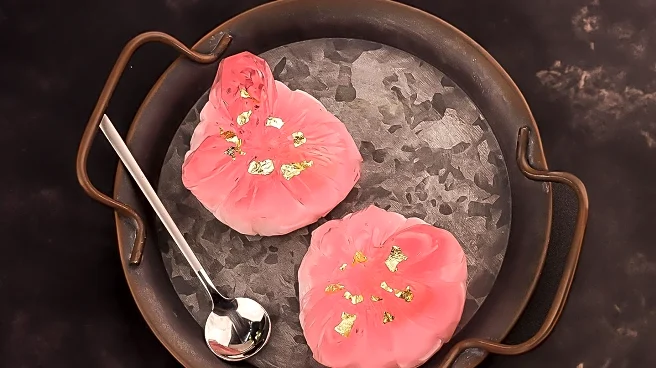What's Happening?
Reverse searing is a cooking technique gaining popularity among chefs for its ability to produce perfectly cooked steaks. This method involves initially cooking the steak at a low temperature in the oven, followed by a quick, high-heat sear to achieve a caramelized crust. Culinary experts, such as Danny Ganem from Gioia Hospitality Group, highlight the benefits of reverse searing, which include even doneness and enhanced flavor retention. The technique is particularly effective for thick cuts like ribeye and filet mignon, allowing for better control over temperature and preventing overcooking. The process requires basic kitchen equipment, including a temperature-controlled oven, a wire rack, and a heavy-duty pan for the final sear.
Why It's Important?
Reverse searing offers a solution to common challenges faced when cooking thick steaks, such as uneven cooking and loss of flavor. By starting with a low-temperature cook, the method allows the marbling and collagen in the meat to break down slowly, resulting in a tender and juicy steak. This technique is significant for home cooks and professional chefs alike, as it provides a reliable way to achieve restaurant-quality results. The method also allows for better meal preparation, as the steak can be left in the oven while other components are prepared, making it a practical choice for busy kitchens.
What's Next?
As reverse searing continues to gain traction, more home cooks may adopt this method for its reliability and quality results. Culinary schools and cooking classes might incorporate reverse searing into their curriculum, teaching aspiring chefs the benefits of this technique. Additionally, kitchen appliance manufacturers could develop products specifically designed to facilitate reverse searing, such as ovens with precise temperature controls and integrated thermometers.
Beyond the Headlines
The rise of reverse searing reflects a broader trend in cooking towards techniques that prioritize flavor and texture. This method challenges traditional approaches, encouraging cooks to rethink how they prepare meat. It also highlights the importance of understanding the science behind cooking, as reverse searing leverages the principles of heat distribution and moisture retention to enhance the final product.

